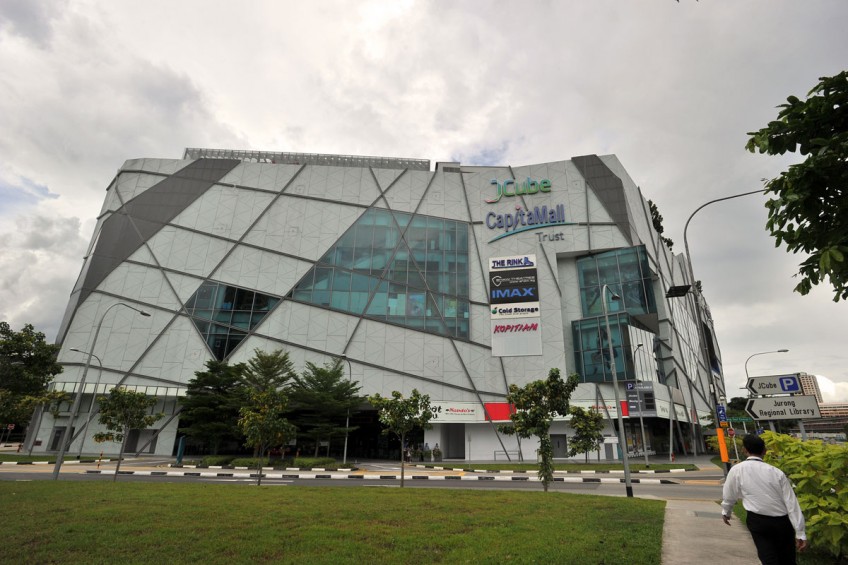Performance of Jurong malls not yet stable: Study

The performance of four malls in the Jurong East Regional Centre has yet to stabilise, but a study making comparisons with three malls in the more mature Tampines Regional Centre has thrown up some positive indicators.
The joint study, by Knight Frank, StarHub's analytics arm SmartHub and big data firm Teralytics, found that malls in Jurong East had more visitors overall, although the spread of visitors was thinner given the far larger floor area.
For the study, StarHub and Teralytics counted visitors anonymously. A person was considered a visitor to the mall cluster if he visited any one, or more than one of the malls there in a day. The study covered Tampines Mall, Tampines 1 and Century Square, as the Tampines malls; while Jem, Westgate, IMM and JCube represented Jurong East. Big Box was not taken as it was too new at the time of the study.
Data from May was used as a proxy of visitorship during non-peak months, while data from December was used for the festive peak season.
In December last year, Jurong East attracted 26.9 per cent more visitors at 3.3 million. It had 34.8 per cent more visitors at 3.1 million in May.
But Tampines had higher visitorship per sq m of net lettable area for both periods. The figure for Tampines was 34 in December and 30 in May; while that for Jurong East was 23 in December and 21 in May.
The study also found the Jurong East cluster did not serve only residents of Singapore's west. A notable proportion, or 20.5 per cent of total footfall, were from the northern region. "A fairly large worker population, particularly from industrial estates in the west, coupled with Jurong East MRT station as an interchange for both East-West and North-South MRT lines, (Jurong East malls) serve as convenient stopovers for the working population residing in the north region," the study said.
However, those living in the west accounted for the bulk of footfall at 55.1 per cent. In Tampines, residents from the east region accounted for 73.4 per cent of total footfall.
This could be because catchment size - calculated as the resident or working population within 2km of the cluster - in Jurong East is far smaller at 192,000, compared with 303,000 in Tampines.
The study also found that Jurong East mall visitors spent longer in the malls.
Of Jurong East mall visitors, 30.3 per cent and 35.5 per cent stayed beyond two hours during weekdays and weekends, respectively. For Tampines malls, it was just 19.4 per cent and 22 per cent.
This could have been due to the total size of malls in the cluster - Jurong East malls have a total net lettable area of 1.6 million sq ft, versus 800,000 sq ft in Tampines - as well as connectivity between malls and a sense of novelty as Jurong East's malls are newer.
Mall rents tend to be higher at Tampines, the study found. Median monthly rents in Tampines were $25.55 per sq ft (psf) in the first half, compared with $16 psf in Jurong East. Mall rents in Tampines are fairly stable but those in Jurong East fluctuated between 2013 and this year as the malls are still new, the study said.
For Jurong East malls to be sustainable in the long term, more homes must be built, along with activities to draw people, it added. "In the next three years, Jurong East is likely to face further competition, with new malls in the north region such as the mega Northpoint City catering to residents in the north."

This article was first published on November 9, 2015.
Get a copy of The Straits Times or go to straitstimes.com for more stories.